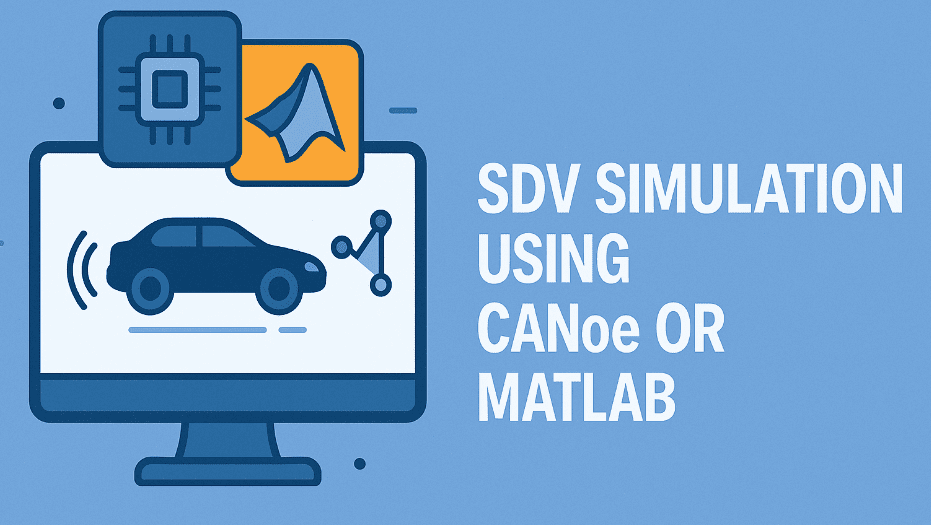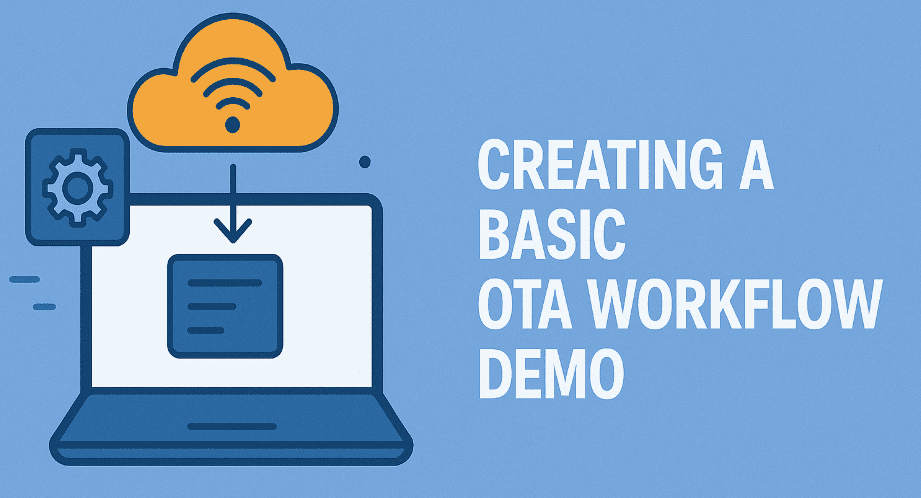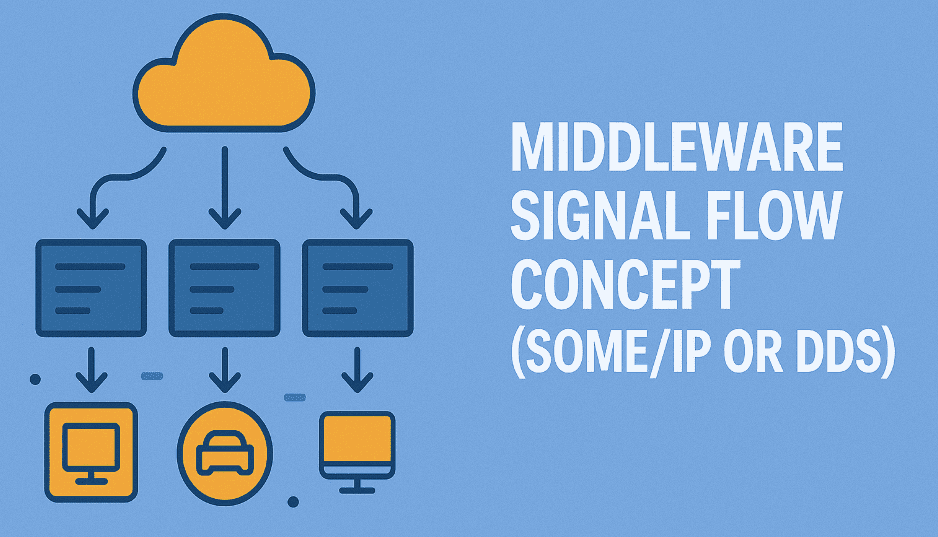Mini Project / Hands-on Demo for Software-Defined Vehicles (SDVs): Part 08
Hello guys, welcome back to our blog. In this article, I will discuss mini projects or hands-on demo for software-defined vehicles like SDVs simulation using CANoe or MATLAB, and creating a basic OTA workflow.
Ask questions if you have any electrical, electronics, or computer science doubts. You can also catch me on Instagram – CS Electrical & Electronics
- Challenges And Opportunities In Software Defined Vehicles (SDVs): Part 07
- Case Study: Real-World Software-Defined Vehicle Examples: Part 06
- Software-Defined Vehicles Development Lifecycle: Part 05
Hands-on Demo for Software-Defined Vehicles (SDVs)
As SDVs gain traction, it is vital not only to understand their theoretical foundations but also to engage in practical experimentation. This section focuses on actionable, hands-on mini projects and demos that learners and professionals can undertake to gain a real-world understanding of SDV components, including in-vehicle networks, OTA updates, and middleware communication. These demos provide a window into how SDVs are designed, developed, tested, and deployed using industry-standard tools and frameworks.
SDV Simulation using CANoe or MATLAB

✅ Overview:
Simulation plays a critical role in modern automotive development. Tools like Vector CANoe and MATLAB/Simulink allow developers to emulate vehicle ECUs, run diagnostics, simulate communication protocols like CAN, LIN, or FlexRay, and validate system behavior in virtual environments.
🧩 Option A: CANoe Simulation
🔧 Tools Needed:
- Vector CANoe
- Database file (DBC)
- CAPL scripting
- Virtual CAN interface (e.g., CANoe Simulation Setup)
🛠️ Steps to Create a Simple SDV CANoe Simulation:
a. Setup Project:
- Launch CANoe.
- Create a new configuration.
- Load the DBC file defining the network (CAN messages, signals).
b. Add Simulation Nodes:
- Add at least two simulated ECUs.
- Use CAPL (Communication Access Programming Language) to create signal processing logic.
c. Implement Signal Flow:
- Write CAPL code to send periodic messages.
- Receive and visualize signals on the Trace and Graphics window.
d. Simulate ECUs in SDV:
- One ECU can represent an ADAS control unit.
- Another can simulate a Brake Controller ECU sending deceleration signals.
e. Testing:
- Run the simulation.
- Monitor performance, message exchange, and behavior.
📈 Learning Outcome:
- Understand how ECUs communicate.
- Hands-on exposure to CAN signal transmission.
- Real-world experience of SDV communication layers.
🧩 Option B: MATLAB/Simulink Simulation
🔧 Tools Needed:
- MATLAB/Simulink
- Vehicle Dynamics Blockset
- CAN Communication Toolbox
🛠️ Steps to Simulate a Vehicle Function:
a. Create Model:
- Use Simulink to build a simple EV powertrain model.
- Integrate sensors, actuators, and control logic.
b. Add CAN Interface:
- Use blocks from the Vehicle Network Toolbox to simulate a CAN bus.
- Define signals, messages, and routing logic.
c. Control Logic:
- Add ADAS-like logic (e.g., cruise control, auto braking).
- Use Stateflow for condition-based triggering.
d. Run Simulation:
- Simulate dynamic behavior.
- Analyze signal flow in the scope window.
📈 Learning Outcome:
- Visualize vehicle behavior under various scenarios.
- Understand physical plant models in SDVs.
- Learn CAN message simulation in the MATLAB environment.
Creating a Basic OTA Workflow Demo

✅ Overview:
Over-the-air (OTA) updates are a cornerstone feature in SDVs. This mini project involves setting up a simplified OTA workflow using virtual environments to emulate software updates over a network.
🧩 Tools You Can Use:
- Docker
- Python Flask (as OTA server)
- Simulated ECUs (e.g., Raspberry Pi or virtual Linux machines)
- Postman or cURL for API triggering
🛠️ Steps to Simulate a Basic OTA Update Flow:
a. Set Up OTA Server:
- Create a Flask-based REST API server.
- Host firmware versions and metadata.
- Provide endpoints like /check-update, /download, /install.
b. Create Client (Vehicle Emulator):
- Create a Python script to emulate ECU behavior.
- Client checks for updates using REST calls.
c. Download & Install Simulation:
- Emulate downloading a firmware file (could be a simple .txt or .bin).
- Simulate an integrity check using hash verification.
- Log simulated “installation.”
d. Optional Logging & Rollback:
- Log success/failure.
- Add mock rollback procedure for failed updates.
📈 Learning Outcome:
- Understand OTA architecture: Server, client, and integrity checks.
- Demonstrate updated workflow in software-defined environments.
- Experience the modularity and scalability of SDV updates.
Middleware Signal Flow Concept (SOME/IP or DDS)

✅ Overview:
Middleware is the glue that connects applications and services across domains in SDVs. This mini demo illustrates how a signal flows from one component to another using a middleware protocol like SOME/IP (Scalable service-Oriented Middleware over IP) or DDS (Data Distribution Service).
🧩 Simulation of Middleware Communication
Tools You Can Use:
- Eclipse Cyclone DDS or OpenDDS
- GENIVI SOME/IP Demo Apps
- Python or C++ for service/client stubs
🛠️ Steps for Middleware Communication Flow:
a. SOME/IP Service-Client Setup:
- Use GENIVI’s vsomeip framework.
- Create a “Service” app that sends speed data.
- Create a “Client” app that subscribes to speed data.
b. DDS Setup (Alternative):
- Define data topic (e.g., VehicleSpeed).
- The publisher writes on the topic; the Subscriber reads.
- Use Cyclone DDS Python or C++ API.
c. Run & Visualize Flow:
- Launch the service and client.
- Log timestamps, message payloads.
📈 Learning Outcome:
- Understand service-oriented architecture in SDVs.
- Implement communication middleware for real-time systems.
- Develop service-discovery-based interaction.
🔚 Conclusion
These hands-on mini projects offer immense learning value:
- CANoe and MATLAB/Simulink simulations enable engineers to validate their designs in a virtual, cost-effective way.
- OTA updates demystify the complexity of remote update infrastructure.
- Middleware flows give insight into how decoupled software blocks communicate in real-time with robustness and safety.
Whether you’re a student, developer, or automotive engineer, these SDV mini projects allow you to go beyond theory and experience the future of automotive technology firsthand.
This was about “Mini Project / Hands-on Demo for Software-Defined Vehicles (SDVs)“. Thank you for reading.
Also, read:
- 100 (AI) Artificial Intelligence Applications In The Automotive Industry
- 1000+ Automotive Interview Questions With Answers
- 2024 Is About To End, Let’s Recall Electric Vehicles Launched In 2024
- 50 Advanced Level Interview Questions On CAPL Scripting
- 7 Ways EV Batteries Stay Safe From Thermal Runaway
- 8 Reasons Why EVs Can’t Fully Replace ICE Vehicles in India
- A Complete Guide To FlexRay Automotive Protocol
- Adaptive AUTOSAR Vs Classic AUTOSAR: Which One For Future Vehicles?
